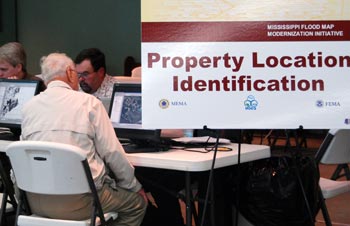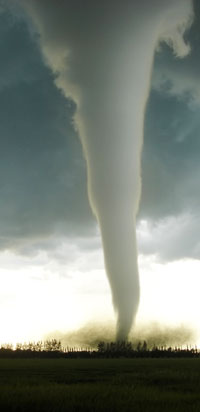
 Recent floods along the Mississippi, the latest in a string of headline-grabbing natural disasters, are causing insurance companies to reevaluate their business model.
Recent floods along the Mississippi, the latest in a string of headline-grabbing natural disasters, are causing insurance companies to reevaluate their business model.
Even the U.S. government is getting into the act. The U.S. National Flood Insurance Program was founded in 1968 to guarantee insurance to communities in flood plains that agree to certain provisions, such as maintaining levees. That program is in trouble financially, and the House is considering reducing subsidies and raising premiums to discourage people from living in floodplains.
We use certain methodologies to quantify water supply and flood frequency, and they are extremely entrenched in the system. The federal government has standardized those metrics and they’re used in building codes and insurance rates because there’s billions of dollars of infrastructure at stake. But people are starting to realize that these methods aren’t based on reliable data, partly because of climate change, and partly because we don’t have enough historical data. For example, flood data in the West is based on fewer than a hundred years of records. But nobody really has a good idea of what to do about that.
I was surprised to learn: A lot of the documents the federal government — USGS, FEMA. Army Corps of Engineers — uses to analyze and plan for flood risk are decades old, even from the early 1980s. So as we’re looking for ways to incorporate climate change into flood risk models and water supply analysis, we’re already behind.
Notable quote: Jeanine Jones of the California Department Water of Resources said, "A lot of California's existing infrastructure was designed on assumptions that are no longer valid." When you think about the billions of dollars that have been spent on that infrastructure, all built on these assumptions — and those assumptions may be changing — it kind of blows your mind.
Click to read more about this topic
The flooding Mississippi is the latest in a rising tide of natural disasters. Munich Re, a company that insures insurance companies, tracked 960 natural disasters in 2010, up from a 10-year average of 785. Total 2010 economic loss was $150 billion worldwide. In response, insurance companies are spending more money tracking and monitoring the disasters and raising rates to cover the growing damages. In the first quarter of 2011, Munich Re lost €948 million “owing to exceptionally high costs for natural catastrophes.” Regional insurance companies will also take it on the chin because of payments to homeowners and steeply rising reinsurance rates. Following the recent flooding in Queensland, Australia, reinsurance rates rose 30 percent. In the wake of Japan’s earthquake/tsunami, they are expected to rise 50 to 100 percent.
Bottom line: It is sensible to make it more economically unattractive to build along coastlines and in floodplains or along the edges of forests where forest fires occur, especially as risks increase due to climate change.
I’ll be watching: for more stories that link the Mississippi floods and other Acts of God with the helping human hand that comes from greenhouse gasses. Also, with 2 million acres lost in Texas wildfires, 3 million farmland acres lost in the Mississippi’s flood, 3 million chickens killed in the Alabama tornadoes, how will already-surging food prices be affected?
Click to read more about this topic
| Tweet This Page |










